Matador Network's Blog, page 2283
April 15, 2014
Drone footage of Alaskan ice caves
While drones for military use are a mixed bag at best, drones for aerial photography are unequivocally awesome. There have been a number of really great videos out recently featuring shots taken from miniature aerial quadcopter drones — shots that would likely not be possible to recreate with humans or larger aircraft. Because of this, we’re getting all sorts of perspectives on the world we’ve never got before.
In this case, it’s of Mendenhall Glacier near Juneau, Alaska. The shots were taken with a GoPro camera mounted on a DJI Phantom — a remote-control quadcopter designed specifically with GoPros in mind. The thing is, the Phantom isn’t particularly unaffordable, as far as drones go, and neither is the GoPro. So I’d imagine we’ll be seeing a lot more videos like this. Hell, if I had one of these, I’d use it to see if there were any bags of Doritos left on the top shelf of my pantry.
Used in nature, though, it’s spectacular — these are sights we just wouldn’t be able to see without having to climb through treacherous crevasses, or hang-glide over a glacier. A whole new world has been opened to us. 
The post Drone footage of Alaskan ice caves is incredible appeared first on Matador Network.

15 signs you’re a freelancer

Photo: TheGiantVermin
1. You have unrealistic concepts of time.
No, that post can’t be written in 20 minutes. That article will really take 3 hours with edits. That blog series will need to be rewritten, twice, so don’t even try to estimate it. Wait, it’s 4:50? I can fit in another draft…
2. You’re actually afraid of hemorrhoids.
3. There’s a novel/memoir/poetry collection/etc. in your digital back pocket.
No writer got into writing so they could do copy or content or columns for the rest of their lives. This was just the thing that paid.
4. Some days, walking to the bathroom is your only form of exercise.
5. You resent portrayals of writers.
Freelancers are a completely different beast from the pigeonholed writers you see on screens, usually somewhere well between the self-destructive Robert-Downey-Jr.-Zodiac journalist and the tortured-academic-Jeff-Daniels-Squid-and-the-Whale novelist.
6. You resent the success of fictitious writers.
Most of us work hoping to eventually make an income that resembles middle class, so when Hannah Horvath gets a book deal or Owen Wilson gets his novel praised by Gertrude Stein, you start making up reasons why it would ‘never happen like that’ in real life — even if Midnight in Paris could feasibly happen.
7. You’re really tired of explaining to people ‘what you do.’
“So, what do you do?”
“…I’m a [muffled response].”
“A what?”
“…I’m a — uh, freelance writer.”
“Wow, that’s cool. I wouldn’t have pinned you for a writer; you look nothing like Ethan Hawke.”
“…”
“So, like, who do you write for?”
“Some websites you don’t know and some magazines you don’t read and a few companies you can pretend you’ve heard of.”
“Cool. I’m gunna wait silently for someone else to talk to me.”
8. You’re really tired of explaining ‘what sort of stuff you write.’
“So, what do you do?”
“I’m a…writer.”
“Cool.”
“…”
“So, like, what sort of stuff do you write?”
“Like, everything.”
“Like, novels and stuff?”
“Uh, well yeah, but, not for, like, work.”
“Oh. Then what do you write?”
“Oh, you know, like — blogs and emails and articles and stuff.”
“That’s a job?”
“…”
9. You’ve had free business cards made so you can enter contests for free lunch.
10. You have a ‘system’ for your clothes.
To go with the sweatpants/shorts and hoodie that are worn constantly and never washed, there’s the comfortable ‘work’ t-shirt and underwear that get cycled once a week, and if I actually leave the house I put on ‘real’ clothes then change back into the ‘work’ ones later, meaning I live in my version of pajamas. Is this just me? Great.
11. You think you’re a lot better at scheduling than you really are.
Whoops, didn’t account for the 16 urgent emails, chatty mailman, extra episode of Frisky Dingo at lunch, and the dog vomiting on the laundry after eating your underwear — the ‘real’ underwear you left out because you only wore them for like an hour yesterday before changing back into your ‘work’ underwear, and you were going to wear them out again tonight.
12. You’re irrationally snobbish about your work hours.
On one hand, you can’t go back to an office job because it’s so liberating to not have to wake up on time or stay late or have a standard workweek — but then you end up waking at 8:30, cutting out at 5, and taking weekends off, anyway. Somehow it’s different, though, I swear.
13. You’re irrationally snobbish about your schedule.
One of the best things about freelancing is working your own schedule. I can work any days I want! Woo! And then you have to have an errand day in the middle of the week under constant, pulse-throbbing anxiety because it’s killing you to take an entire day off.
14.You’ve forgotten how awful commuting is.
One day your internet goes out and you have to drive to a café eight minutes away, and you curse the whole way because of all the time it’s wasting.
15. The idea of buying lunch is absurd.
I still can’t shake the feeling that I’m making a big mistake even when I eat lunch out while traveling. Such is being spoiled by having leftovers and an entire kitchen at your disposal with no set lunch hours. 
The post 15 signs you’re a freelancer appeared first on Matador Network.

Hong Kong & China: new countries?
THE MORE I learn about Asia, the more I realize how much I don’t know about it. It also makes me wonder what other places around the world feel more like a “separate country” than “part of a country.” At least now, after watching this video, I know to plan extra time if visiting China, Hong Kong, and Macau. 
The post Why Hong Kong and Macau might actually be separate countries appeared first on Matador Network.

Happy videos make Pharrell cry
An overwhelming response to Pharrell’s video “Happy” from fans all over the world brought the artist to tears on — where else — Oprah Winfrey’s show. Boom. Boom. I think I love this man, despite his Arby’s hat. 
The post “Happy” videos make Pharrell cry appeared first on Matador Network.

What people from LA really mean

Photo: foxxyz
What they say: What do you do?
What they mean: Do you have any industry connections?
Everybody in Los Angeles is interested in the film industry. Since it’s all about who you know, almost every time someone at a party or meeting (or restaurant) asks about your job, they’re thinly veiling a request to see if you can introduce them to your work colleague the line producer, who just HAPPENS to be working on the next Breaking Bad.
What they say: I’d like a number two, animal style, extra fries.
What they mean: I want my burger with mustard baked into the patty, extra spread, and grilled onions, In-N-Out employee.
In-N-Out, the ubiquitously delicious Californian burger chain, offers a very simple menu pasted on the wall of their shops: hamburger, cheeseburger, French fries, shakes. For those in the know, however, there is an entire “secret menu” that includes variations like number of patties, cooking options, and even vegetarian options for those who don’t enjoy the meat in their cheeseburger.
What they say: Oh, you live in the Valley?
What they mean: Where even is that?
The San Fernando Valley, north of Los Angeles proper, is cheaper, hotter, and further away from the cool stuff happening than most Angelenos want to be. I lived in North Hollywood (nothing whatsoever to do with Hollywood), and it was like pulling teeth to get anyone to come out and visit. Understandable — Pasadena and North Hollywood, two neighbourhoods in the Valley that are literally 20 minutes apart by car, are unreachable by public transit without going all the way downtown and all the way back out again. You might as well be in Northern California, and we all know how Angelenos feel about people from San Francisco.
What they say: It’s so nice to meet you! We’ll definitely have lunch, I’ll call you.
What they mean: I’ve already forgotten your name.
My experience in Los Angeles was that people were very enthusiastic about spending time with you if they thought you had industry connections…otherwise it was all talk, little follow-through. Everyone is pretty busy and time is money; Angelenos know not to expect a real connection out of every meeting and understand that you’re just being friendly. Visitors might think they’ve made a new best friend and get confused over why they never get a text back.
What they say: There was a Sigalert for the 405, so take the PCH to the 10 to the 110 and meet me in Chinatown.
What they mean: Highway 405 is at a standstill, so follow the Pacific Coast Highway to I-10, which connects to I-110.
Every Angeleno I know has extended conversations about directions, literally every time they are trying to get somewhere. Since they spend roughly 80% of their days driving, a lot of recognizable shorthand has arisen. Only people from SoCal refer to freeways with a definite article (“the” 10 instead of “highway 10″) and most will give you complicated directions that vary based on time of day. “Sigalerts” are traffic warnings issued by news media. You’ll never run out of conversation topics with traffic to talk about.
What they say: Let’s get some tacos!
What they mean: Let’s get some tacos!
Everybody likes tacos. And you can often get them from somebody’s abuela on a portable cart on the street corner for a dollar apiece. Her carnitas will melt in your mouth. Yum. 
The post What people in Los Angeles say vs. what they mean appeared first on Matador Network.

20 places to see before they're gone
THERE ARE ALL KINDS OF WAYS places change. As you’ll see in this list, the threats can be environmental, political, or simply the result of too small an area to support the amount of tourism it receives.
In some cases, the very success of a place equals its eventual destruction. Government regulations (or lack thereof) can lead to a loss of access, or a loss of place, depending on the balance. In some cases, armed conflicts may be destroying places as you read this.
The important thing is to recognize how vulnerable a place can be, and to visit it, or at the very least, attempt to appreciate it, before it’s gone. 

1
Great Barrier Reef, Australia
The Great Barrier Reef stretches over 1,200 miles off the coast of Queensland, Australia. It is also the only living organism that can be seen from space. Since 1985 the reef has lost more than half of its corals due to climate change, pollution, and overfishing. Even worse, in December 2013 the Australian government authorized the construction of a new port next to the reef. The construction will involve dredging 3 million cubic meters of seabed.
(via)
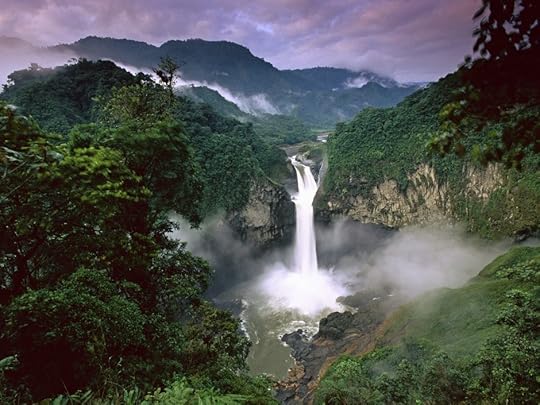
2
Yasuni National Park, Ecuador
Located in the Ecuadorian Amazon, Yasuni National Park is one of the most biologically diverse areas on Earth. It boasts more than 4,000 plant species, 170 mammal species, and 610 bird species, all in an area smaller than Connecticut. Yasuni is also the home of the Waorani people, a semi-nomadic group of hunter-gatherers. Yasuni is estimated to contain 800 million barrels of crude oil. After a long controversy, in 2013, Ecuador approved the economic exploitation of the Yasuni. Drilling activities haven't begun yet, but it seems a matter of time.
(via)
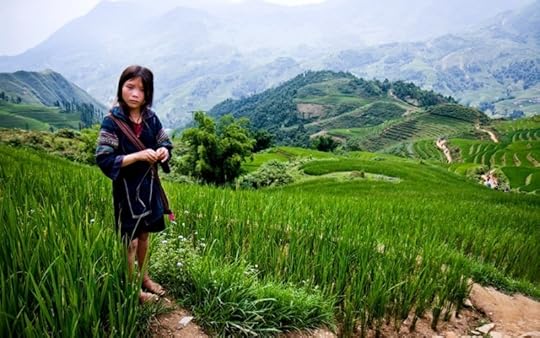
3
Sapa, Vietnam
Sapa is a remote town in the mountains of northern Vietnam, where emerald rice fields cascade across valleys. Technically there is nothing wrong with Sapa, but this once-small, secluded place is now among Vietnam's biggest tourist destinations. It represents the oldest traveler's dilemma: When does an authentic place stop being "authentic?"
(via)
Intermission
[image error]
26 futuristic urban farms and green spaces [pics]

51 natural wonders so amazing it’s hard to believe they exist
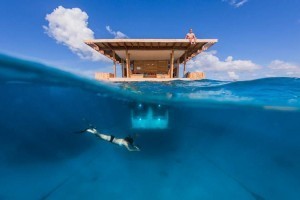
48 epic dream hotels to visit before you die
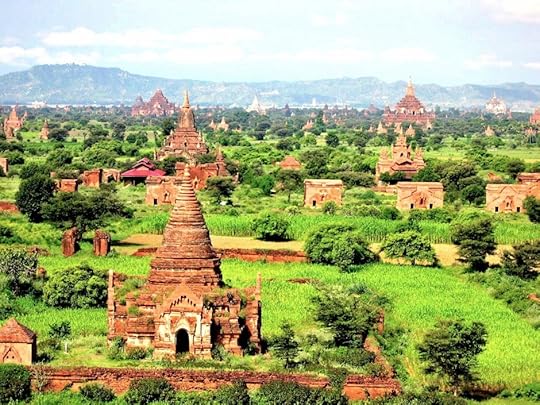
4
Bagan, Myanmar
Bagan is a colossal complex which encompasses more than 2,200 temples and ruins. It stopped being a secret on the Southeast Asian tourist circuit a long time ago, yet the number of tourists has only recently been rapidly expanding. The experience of exploring a temple for yourself is coming to an end.
(via)

5
Vientiane, Laos
It’s difficult of think of Vientiane as a capital city. With its relaxing atmosphere, the Laotian capital is one of the most low-profile stops in the Southeast Asian backpacker circuit. Now, China and Vietnam are in an economic dogfight for the contracts that will bring Vientiane into the 21st century. The city is set for a massive construction boom that will bring thousand of workers to its doors.
(via)

6
Seaflower Biosphere Reserve
The Seaflower Biosphere Reserve is one of the most isolated ecosystems in the Caribbean. The region’s low population means there’s a low human impact on the reserve. Being a UNESCO Marine Reserve protects Seaflower from economic exploitation. Yet, it has been the subject of a decades-long territorial dispute between Colombia and Nicaragua. In 2013, international courts gave Nicaragua half of Seaflower's area. Cash-strapped Nicaragua invited multinationals to look for oil on its half after the ruling.
(via)

7
Mt. Kilimanjaro, Tanzania
The ice fields on Kilimanjaro have been in retreat over the last 150 years and only 10% of the original snow remains. Some scientists say the glacial cap is beyond recovery and could disappear within the next decade.
(via)

8
Havana, Cuba
The largest city in the Caribbean, Havana has colonial-era buildings, cars from the '50s, and internet speeds from 1995. Cuba is on its way to become a CINO: Communist In Name Only. The country is eager to follow in the footsteps of Vietnam and China and embrace foreign investment. Regardless of how beneficial or harmful it will be for the Cubans, Havana is about to start a period of dramatic changes.
(via)

9
Damascus, Syria
It may already be too late for this one: The current Syrian Civil War has ravaged Damascus, with some of the fighting happening in the Old City, which is the oldest quarter of the oldest city in the world. As of now, it’s too early to know the extent of the damage to historical mosques, castles, and gates caused by shelling, looting, and arson.
(via)
Intermission

12 places where you will feel absolutely dwarfed by nature
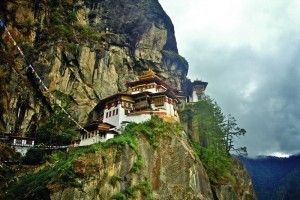
50 places you can’t reach without climbing [pics]
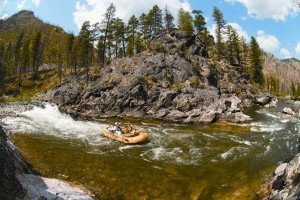
21 places you have to see by water

10
Yangon, Myanmar
Yangon is the former capital and biggest city of Myanmar. It is also a metropolis of five million that has been cut off from the world for decades because of a travel boycott. When the boycott was lifted in 2012, Yangon opened its doors to the West. Since then, the city has experienced a fast and dramatic transformation.
(via)

11
Lake Nicaragua
Lake Nicaragua has the only population of freshwater sharks in the world. After a century-long controversy, the government has given the go-ahead to the Nicaragua Canal. The project plans to link the Pacific and Atlantic Oceans. Environmentalists have warned of the canal's irreversible effects on the local environment. Questionable feasibility studies are already underway.
(via)

12
Somaliland
Somaliland is a breakaway state from Somalia that is not recognised by a single nation on Earth. Yet, in the middle of the most anarchic region in the world, Somaliland is a stable and democratic state. While international recognition is still far away, the world's most tenacious explorer, Coca Cola, just arrived. A bottling plant opened in the capital Hargeisa (pictured) in 2013.
(via)
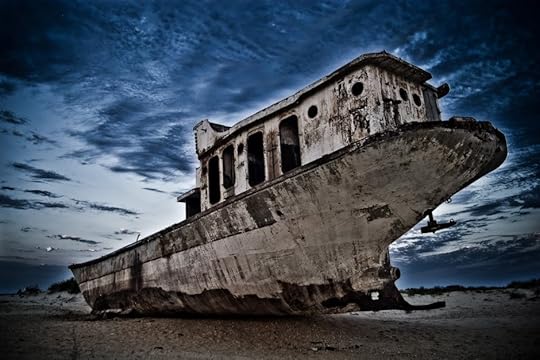
13
South Aral Sea, Uzbekistan
Thirty years ago the Aral Sea was the fourth-largest lake in the world. Since then, the diversion of the Syr Darya and Amu Darya rivers for crop irrigation has shrunk the Aral to 10% of its original size. Now the Aral is divided between the North and South Aral Seas. In the north, Kazakhstan has saved the Aral by building a series of dykes. Yet, in the south, Uzbekistan has abandoned the Aral to its fate. One of the main reasons is the presence of oil and gas on the former Aral seabed, which prompted its exploitation in 2010.
(via)

14
Nuuk, Greenland
Nuuk is the capital of Greenland, the largest island in the world. With only 15,000 people, Nuuk is the gateway to the Arctic, the land of ice, snow, and polar bears. But as Greenland is on course to gain independence from Denmark, it's also planning to start exploiting the vast untapped ores all over the island. Nuuk expects to receive thousands of mining workers from all over the world in the coming years.
(via)

15
Darien Gap
The Darien Gap is a dense jungle between Panama and Colombia and the only section of the Americas not traversed by the Panamerican Highway. Crossing the Darien Gap on foot, while challenging, is possible and is one of the biggest badges of honor that any world traveler can aspire to. Several proposals to build roads crossing the Darien Gap have come about over the years. It just seems a matter of time.
(via)
Intermission
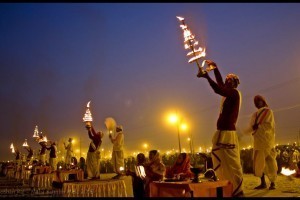
Top places for spiritual travel in 2013
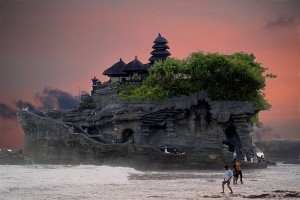
18 scenic places to teach ESL abroad

46 incredible aerial shots of famous places

16
Panajachel, Guatemala
Panajachel has become a home for bohemians from all over the world, creating a vibrant and multicultural town. But the Guatemalan armed conflict created by drug trafficking has affected Panajachel hard. In recent years, expats have reported harassment by vigilante groups. In the middle of a drug war, the idea of a "hippie paradise" isn't welcomed by some factions.
(via)

17
Lake Chad
Lake Chad spreads between Chad, Niger, Nigeria, and Cameroon and is home to lions, crocodiles, hippos, and many other animals. Unfortunately, Lake Chad is drying up fast and there's no clear answer why. Climate change and irrigation methods are the usual suspects. However, other scientists maintain that the shrinking is not related to human causes at all. Regardless of the reason, Lake Chad has lost 90% of its water in the last 50 years, with no sign of recovery.
(via)

18
Tuvalu
A series of tiny islands in the South Pacific, Tuvalu is the fourth-smallest country on Earth. The slightest increase of sea level is a death sentence for Tuvalu, which is just a few inches above the ocean. As a backup plan, the Tuvalu government has contemplated relocating its population to New Zealand or Fiji.
(via)

19
Boeng Yak Loum, Cambodia
Boeng Yak Loum is a deep and almost perfectly round crater lake in the jungle of northeastern Cambodia. Locals consider the lake sacred and take swims while fully clothed.
As of now, visitors pay an entry fee of less than a dollar. The fee goes to the local community. However, the government is planning to seize the area around the lake and start building five-star hotels.
(via)

20
Ujung Kulon National Park, Indonesia
Located in the Western tip of Java, Indonesia, Ujung Kulon National Park is the last refuge of the Java rhinoceros, the most endangered animal in the world. The park is also next to Anak Krakatoa, one of the most active volcanoes in the world. But keeping a national park pristine on the world's most-populated island has been an uphill battle for Indonesia. Poachers already drove the Javan tiger to extinction in the '70s and have narrowed the rhino population to less than 40 individuals.
(via)
The post 20 spectacular places to see before they’re changed forever appeared first on Matador Network.

In a country of 18-year-old soldiers

Photo: Israel Defense Forces
The soldier in the seat in front of me is FaceTiming his girlfriend, I realize, as I peer around the headrest. I’ve gotten in the habit of trying to covertly watch the people around me during these long bus rides, of which there have been a lot lately. The soldiers are always the most interesting to me, but right now I feel acutely aware of the fact that I’m most likely visible somewhere in the background of the video frame on his iPhone, intruding on their private conversation. Not for the first time in my two-month stay in this country, I feel vaguely out of place.
Being in Israel as an 18-year-old foreigner is disconcerting at times, both for me and for those around me. With my slight tan, wavy dark hair, and ambiguously Mediterranean-looking features, people who see me assume I’m either much younger or much older than I am, because at my age I should be in olive green fatigues on a base in the middle of nowhere in the Negev instead of doing things like visiting historic sites on weekday afternoons. And then I open my mouth, and Ani lo m’daber ivrit? I don’t speak Hebrew? comes out like a question, apologetic, meek in a way that I rarely am in my own language. I may be able to order falafel with all the correct accouterments just like an Israeli can, but I’m not one of them.
In a nation that often seems defined by its palpable divisions — between religious factions, ethnic groups, political parties, and neighborhoods — I’m the other type of Other here; I’m the almost-but-not-quite. It hits me as I talk to Israelis and hike with them and party with them and make friends with them. My great-grandparents could’ve easily boarded a boat in the other direction, could’ve arrived at the port in Yafo sunshine instead of New York cold, could’ve become kibbutzniks before it was cool instead of Brooklynites long before that was cool. Obvious as it sounds, the only true difference between me and the kids my age on this bus is that I was born one place and they were born another.
I don’t remember much from high-school math classes, but I do remember that an asymptote will curve infinitesimally close to an axis, will eventually run parallel to it, but will never touch it. I feel more at ease and less like an expat here in Israel than I’ve felt in most other places I’ve traveled, but I still have no intention ever of making aliyah — taking up the Israeli government on its offer of citizenship and moving here — and so I can already feel my curved trajectory straightening out into a line, homologous to this foreign yet familiar axis, and flirting so close to it I can even feel the shade from the banana trees along the highway by the shore of Haifa beach, taste the amba-colored sunrise over Rothschild Boulevard at 6am.
I’m a people-watcher by nature, but I do worry that by making these comparisons and contrasts, I widen the chasm in my head.
The driver pulls into the parking lot of a rest stop. I’ve been here before; all the Egged buses that go between Galilee and Tel Aviv stop here, and god knows I’ve been on the road a lot. There’s a convenience mart, restrooms, an outpost of the ubiquitous Aroma Espresso Bar. The outdoor picnic tables are packed with a sea of IDF uniforms sipping iced coffee; it’s a Sunday morning, and all the soldiers are heading back to their bases for the week, taking advantage of the free bus ride if they’re in uniform and carrying their military ID. The girl waiting in line in front of me for the bathroom unexpectedly runs into a friend at the sinks. They hug excitedly and catch up in rapid Hebrew. Their guns clink against each other, chatting in the language of metal on metal.
I’ve never even held a gun before, but if I’d grown up here — perhaps on a leafy suburban street outside Tel Aviv in Herzliya, instead of on a leafy suburban street outside Washington, DC — there’d be an assault rifle hanging from my shoulder five days out of seven. It’s a tough balance to strike, mentally, knowing that my Israeli peers have seen things I’ve never seen, done things I’ll hopefully never have to do, but also trying not to categorize them as being so vastly different from myself. Because the truth is they’re not.
When they’re home for the weekends, they’re just as preoccupied with friends, music, bad TV, and cheap alcohol as everyone I know in the States is. They’re teenagers, after all. Teenagers who’ve worked checkpoints and flown fighter jets and shot semiautomatics. Teenagers who, if given the choice, perhaps would’ve preferred to go directly to university or start a business or soul-search in Southeast Asia instead of serve in the military — or perhaps wouldn’t. Patriotic pride is not to be underestimated, and in a country like Israel, it’s a sustaining life force.
Back on the bus after the break, it’s now midday, and it’s sunny. The soldier next to me shakes out her ponytail, yawns, and closes her eyes against the glare. She stretches her legs out, combat boots sticking into the aisle. To me at 18, combat boots are merely a fashion statement, not a rite of passage. It’s strange to think about. I’m a people-watcher by nature, but I do worry that by making these comparisons and contrasts, I widen the chasm in my head. I’m too similar to be a disconnected fly on the wall here, but I also doubt I’ll ever fully be able to understand what it’s like to exist within the Israeli condition.
And what is the Israeli condition, anyway? I’m still not entirely sure. Is it, as Israeli journalist Ari Shavit writes, the fact that the nation has found itself in the unique conundrum of playing both the role of intimidator and intimidated on the global stage? The fact that in the space of a year, kids go from being issued textbooks to being issued military uniforms, and a few years later, issued textbooks again? The fact that the notorious resilience, stubbornness, and prickly exterior aren’t just an affectation but rather a means of survival? Or is it the fact that all of this isn’t even food for thought here because it’s just the reality of life?
I hear a crinkling noise and glance over to my right. The guy across the aisle from me, with too much hair gel and a brown Golani Brigade beret pinned to his shoulder, has attempted a three-point shot with his empty Doritos bag but missed the trash bin. He takes off his headphones, gets up, and retrieves the trash from the floor of the bus, setting it gently in the bin.
Then he heads back to his seat, places his gun serenely and carefully in his lap for safekeeping like it’s a kitten, and puts his headphones on again. Outside the window, the Galilee hills roll by. 
The post On being an 18-year-old civilian in a country of 18-year-old soldiers appeared first on Matador Network.

19 epic road trips through Scotland
Note: Place names located above the central belt of Scotland have been translated into Scottish Gaelic to help with navigation.
1. Selkirk → Moffat (Scottish Borders, A708)

Moffat Valley. Photo:
From Selkirk, cruise up the side of St Mary’s Loch, at the head of the Yarrow Valley in the heart of the Scottish Southern Uplands. Stop at Tibbie Shiels Inn for an excellent pub lunch. The surrounding area forms a nature reserve spanning 922 hectares, owned by the National Trust for Scotland. To work off lunch, climb up the pass and drop down to view one of Scotland’s finest waterfalls, the Grey Mare’s Tail. The Southern Uplands are a wonderland for botanics, bird watchers, and hill walkers.
2. Ayr → Turnberry (Ayrshire, A719)

Culzean Castle. Photo: Jamie Wyllie
As you leave the town of Ayr (Inbhir Àir, “Mouth of the River Ayr”), head south on the A719 and visit the birthplace of Robert Burns, Scotland’s most famous bard. Jump back on the coastal main road and check out the Electric Brae, or Croy Brae as it’s known locally. The hill is an optical illusion where you appear to be going uphill when actually you’re traveling down. Next, stop at Culzean (pronounced “Culain”) Castle and Country Park, where General Dwight D. Eisenhower had an apartment during the Second World War. Finish at Turnberry and enjoy a walk down the magnificent beach bordered by a championship golf course.
3. Fort William → Inverness (A82)

Urquhart Castle and Loch Ness beyond. Photo: Peretz Partensky
Follow the Caledonian Canal north from Fort William on the A82. The canal links the lochs of the Great Glen to form a maritime route from west to east, precluding the need to sail round the often stormy seas off the north coast. Stop at the Commando Memorial just north of Spean Bridge, which commemorates the men of the original British Commando Forces of World War II. Look back south and on a clear day you’ll see Ben Nevis, Scotland’s highest mountain.
Continue north along the banks of Loch Lochy (Loch Lochaidh) and Loch Oich (Loch Omhaich) to lunch in Fort Augustus. As you go further north aside Loch Ness, keep an eye out for the elusive monster, Nessie. Stop at the visitor centre just after Urquhart Castle in Drumnadrochit (Druim na Drochaid) to learn about the hunt for the monster. Continue north along the loch to Inverness, where the canal finally joins the sea spilling into the Moray Firth.
4. Crail → Elie (Fife, A917)
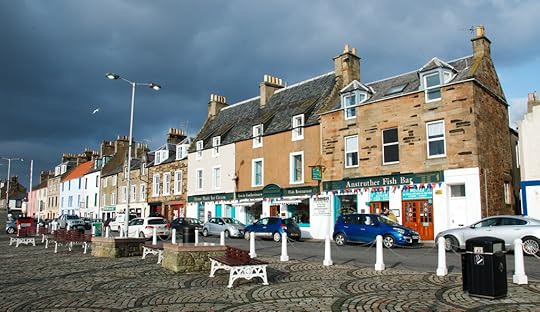
Anstruther Fish Bar. Photo: Magnus Hagdorn
Drive southwest along the A917 and visit the fishing villages of the East Neuk of Fife. Don’t miss the Anstruther Fish Bar down at the harbour, one of the best chippies in Scotland. Journey on to Pittenweem and St Monans, finishing up at Ship Inn in Elie, which overlooks the natural harbour.
5. Lochgilphead → Tayvallich (Argyllshire, A816/B841/B8025)

Sound of Jura. Photo: Scott Marley
Trace the Crinan Canal north up the A816 and turn off at Cairnbaan (An Càrn Bàn). Follow the country road all the way to Crinan (An Crìonan), where the canal opens into the Atlantic. Walk around the little harbour and look northwest across the Sound of Jura (An Linne Rosach) to the Gulf of Corryvreckan (Coire Bhreacain); whirlpools stir the sea here. Return partway along the B841 and turn south down the B8025 to Tayvallich (Taigh a’ Bhealaich), Scotland’s prettiest natural harbour tucked up Loch Sween. Enjoy the locally caught seafood at the pub in the village.
6. Balloch → Inveraray (Argyllshire, A82/A83)
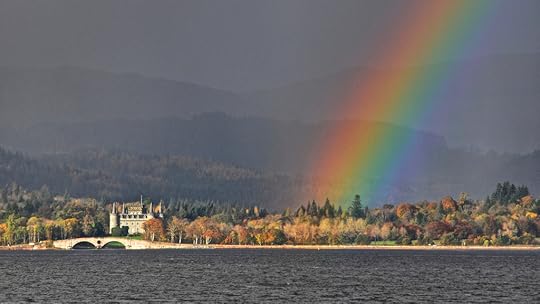
Inveraray Castle. Photo: Matt Smith
Cruise north up the “bonnie banks” of Loch Lomond (Loch Laomainn) and turn left at Tarbet (An Tairbeart) onto the A83. Climb up through Glen Croe (Gleann a’ Chrò) and stop at the summit of the Rest and Be Thankful. Look back down the valley to view the old road twisting its way up the pass. Drop down off the top and stop at Loch Fyne Oysters to enjoy some of the very best of Scottish seafood. Finish up at the wedding cake, Inveraray Castle, home to the Duke and Duchess of Argyll.
7. Craignure → Tobermory (Isle of Mull, A849/B8035/B8073)

Tobermory. Photo: Eric The Fish
Take the ferry from Oban (An t-Òban) to Craignure on the Isle of Mull. Drive north and turn left at Salen (An t-Sàilean) onto the B8035, then right onto the B8073 up the northwest coast of the island. Stop off and take the pedestrian ferry over to Ulva (Ulbha) Island for a pint of prawns at the Boathouse. Continue to Calgary Bay, where island emigrants boarded ships for the New World after being evicted from their crofts during the Highland clearances. Enjoy a bracing swim in the Atlantic off the stunning beach. Journey on to Dervaig (Dearbhaig) and finish up at Tobermory (Tobar Mhoire), with its multicoloured houses. Don’t miss a pint in the Mishnish bar on the harbour front.
8. Salen → Ardnamurchan Point (Arnamurchan Peninsula, B8007)

Ardnamurchan Peninsula. Photo: Graeme Law
Follow the edge of Loch Sunart (Loch Shuaineart) west along one of the most challenging roads in the country through Glenborrodale (Gleann Bhorghdail). Keep an eye out for red deer as you swing inland through the hunting estate of the same name, then stop off at the Kilchoan Hotel. Continue west to the lighthouse at Ardnamurchan Point, the most westerly point on mainland Scotland. Backtrack 3 miles and turn north to Sanna Bay. Stop at the end of the road and walk down to one of the most beautiful beaches in Scotand — skinnydip if you dare!
9. Crianlarich → Ballachulish (A82)
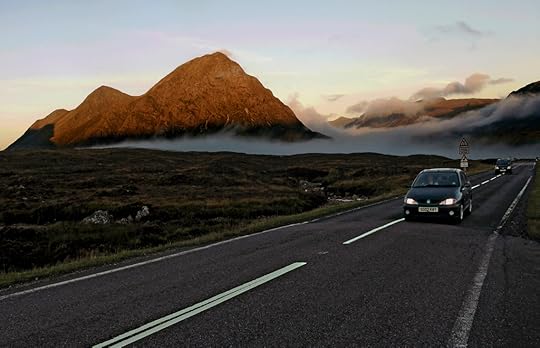
Glen Coe. Photo: KENNETH BARKER
Follow the West Highland Way (Slighe na Gàidhealtachd an Iar) north to Tyndrum (Taigh an Droma) past the Green Welly shop. Climb up onto the moon-like landscape of the Great Moor of Rannoch, past the ski centre, before dropping down through the stunning scenery of Glen Coe (Gleann Comhan), site of the massacre of the MacDonalds by the English. Take time to stop and try to spot the many climbers and walkers on the surrounding Munros (mountains reaching over 3,000 feet).
10. Pitlochry → Aberfeldy (Perthshire, B8019/B846/A827)

Queens View over Loch Tummel. Photo: Christian Michel
Go west from Pitlochry (Baile Chloichrigh) to Loch Tummel (Loch Teimhil). Stop at Queens View for a look at the stunning view favoured by Queen Victoria. At Tummel Bridge, continue west to Loch Rannoch (Loch Raineach) and on to Rannoch Station, the most remote railway station in the UK. Return along the unmarked road on the south side of the loch, then turn right over the hill. Take a detour right to Fortingall and down to Fearnan on the banks of Loch Tay (Loch Tatha). Turn left along the loch to Kenmore at its head, then on to Aberfeldy following the banks of the River Tay, Scotland’s most famous salmon river.
11. Fort William → Mallaig (Inverness-shire, A830)

Glenfinnan Viaduct. Photo: mendhak
Take the A830 west from Fort William along the Road to the Isles. Stop at Glenfinnan (Gleann Fhionghain) to admire the railway viaduct made famous in a number of Harry Potter films, particularly The Chamber of Secrets. Walk down to the shores of Loch Shiel (Loch Seile) and view the monument where Bonnie Prince Charlie called for the local clansmen to assemble in 1745, proclaiming the throne of Great Britain to be denounced and rightfully returned to his family, the Stuarts. Continue on to Mallaig (Malaig), where the road finishes at the ferry to the Isle of Skye (Eilean a’ Cheò).
12. Armadale → Elgol (Isle of Skye, A851)

View out to the Isle of Eigg. Photo: Greg Neate
Take the ferry from Mallaig over the sea to Skye. Visit Grumpy George’s shop on the right as you come off the ferry and say hi to his parrots, then drive north up the A851 till you reach the A87. Turn left, then left again after two miles onto the B8083. Follow this challenging road all the way to the end at Elgol (Ealaghol). Park and take in the views south to the islands of Eigg (Eige), Rhum (Rùm), and Canna (Canaigh). Grab the picnic and catch the boat across the bay, then walk up to Loch Coruisk (Coire Uisg) into the natural amphitheatre of the Black Cuillin and marvel at the scale of the mountains.
13. Kelso → Duns (Scottish Borders)

Jim Clark Rally. Photo: Neal Fowler
Follow the Jim Clark Rally, the only closed-road motorsport event on mainland UK, over the Scottish bank holiday weekend in May. Action takes place across the “Merse,” the rich rolling farmland in the Tweed Valley. Don’t miss fish and chips at the iconic Duns chippie.
14. Invergarry → Plockton (A87)
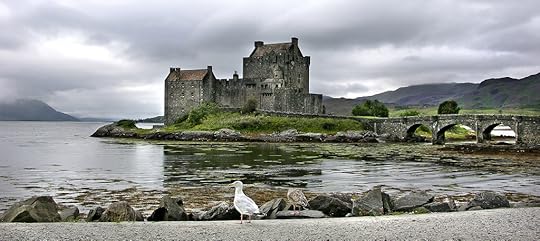
Eilean Donan Castle. Photo: Angelo Amboldi
Leave Invergarry (Inbhir Garadh) west along the north side of Loch Garry (Loch Garraidh). As you climb up from the loch, stop at the viewpoint and drink in the view west up the glen. Turn left past Loch Cluanie through Glen Shiel (Gleann Seile), where the Five Sisters ridge (three of which are Munros) dominates the view to your right. Drop down to Shiel Bridge, and at the head of Loch Duich (Loch Dubhthaich) is the iconic Eilean Donan castle built on a small island. After Kirkton, turn right off the A87 onto an unclassified road over to Plockton, which fringes a natural harbour just inside Loch Carron (Loch Carrann). Try either the Plockton Hotel or the Plockton Inn for excellent seafood.
15. Lochcarron → Sheildaig (A896/Unclassified)

Pass of the Cattle. Photo: Alan Weir
From Lochcarron, drive west to Kishorn (Loch Ciseòrn), then turn left onto the unclassified road toward Applecross (Chomraich, or “Sanctuary”), up over the Bealach na Bà (“Pass of the Cattle”). This is THE road to experience in Scotland — it goes from sea level to over 2,000 feet in just five miles. The pass is so called as this was the drovers’ route with their cattle on the way to market in Glasgow. Before you drop down the other side round the numerous hairpins, stop to take in the view across the sea to Skye.
At Applecross, stop at the inn for fantastic seafood and the craic — Judith Fish, the owner, is a legend. Turn north up the coast of the peninsula, and after a few miles look out for a small bothy (hut) at the north end of a beautiful beach. This was the home of the TV broadcaster and marine biologist Monty Halls and Reuben his dog in the summer of 2008 for the series Great Hebridean Escape. Take a walk down for a look around, but be careful not to stray onto the military installation next door. Continue north to Shieldaig (Sìldeag), where you rejoin the A896.
16. Aviemore → Findhorn (Inverness-shire, A95/A941)

At the distillery. Photo: Pim Geerts
Leave Aviemore (An Aghaidh Mhòr) north on the “old road” up Strathspey Valley. Don’t miss the opportunity to visit one of the leading malt whisky distilleries along the trail — my favourite is Dalwhinnie. Turn left to Elgin (Eilginn), then left again onto the A96.
Just before Forres (Farrais), turn right to Kinloss (Cinn Lois) and onto Findhorn (Inbhir Èireann), where in 1962 “hippies” set up camp. Believing they were in contact with extraterrestrials through telepathy, they prepared a landing strip for flying saucers at nearby Cluny Hill. Today, it has become a charitable trust, the Findhorn Foundation, and includes an award-winning ecovillage community. Finally, take the opportunity to visit the beach, one of the most impressive on the east coast.
17. Ullapool → Achiltibuie (A835/Unclassified)

View from Stac Pollaidh. Photo: Simon Blackley
Go north from Ullapool (Ulapul), then left onto an unclassified road. Drive up the north side of Loch Lurgainn, with the mountains of Cul Beag and Stac Pollaidh on your right. Turn right, south down to Achiltibuie (Achd Ille Bhuidhe, or “Field of the Yellow-Haired Boy”) and visit the Summer Isles Hotel, which overlooks the islands of the same name, a summer haunt of the Royal family on the Royal Yacht Britannia. The yacht is now moored in Leith, Edinburgh — definitely worth a visit.
18. Durness → John O’Groats (A838/A836)

End of the mainland. Photo: Ant Jackson
Drive the route along the roof of mainland Scotland. From Durness (Diùranais), go east on the A838, past Tongue (Tunga); Bettyhill (Am Blàran Odhar), which has a great pub; and then onto Thurso (Inbhir Theòrsa). Take a detour left to Dunnet Head (Ceann Dùnaid), the northernmost point on mainland UK. On a clear day you can see the Orkney Islands to the north. Visit the Castle of Mey, the former holiday home of the Queen Mother, before finishing up at John O’Groats (Taigh Iain Ghròt).
19. Banchory → Blairgowrie (Aberdeenshire, A93)

Balmoral Castle. Photo: denisbin
Start at Banchory (Beannchar) and drive west up upper Deeside to Ballater (Bealadair), then onto Crathie and past Balmoral, the Scottish holiday home of the British Royal family, which they visit every summer. Go on to Braemar, then south past the ski slopes and over the Spittal of Glenshee before dropping down into Perthshire and finishing at Blairgowrie, the “raspberry capital” of Scotland. 

This post is proudly produced in partnership with Visit Scotland.
The post 19 epic road trips through Scotland appeared first on Matador Network.

April 14, 2014
Lessons from a broken ankle

Photo: Ted Eytan
I had just landed on my feet from 13 feet up, but my footing was off and one foot was twisted between the bouldering pads. Chalk was still falling as the pain rushed through my body.
After the ER, x-rays, and the ortho, where I was instructed to stay off my ankle for six weeks, I realized that my typical day as a professional rock climber was going to change.
Needless to say I was pretty bummed about my new situation, but as I adjusted to my reality and gave in to the time of healing, I learned some things.
Practicing patience
Each one of us can stand to practice patience daily. From traffic jams to spilling milk, it’s needed for all kinds of situations and scenarios. Once you’re injured you’re forced to be patient, because no amount of anxiety, impatience, and desire to have things speed along is going to help.
Slowing down
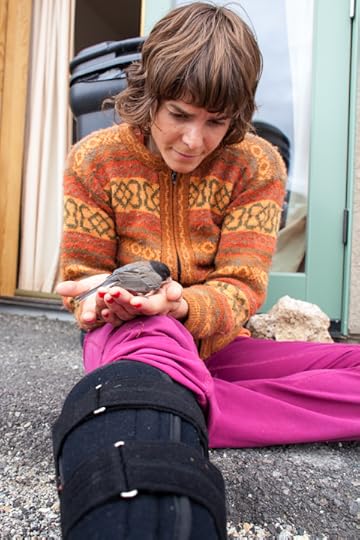
The author. Photo: Ben Ditto
I used to drive a huge diesel camper van. She liked to go the distance but didn’t like to be rushed. Cruising along at 55mph on the highway really taught me something about taking time and enjoying; I adopted the go-slow practice into my daily life, and I feel that for the most part I’ve been consistent and benefited from that.
However, I do frequently find myself rushing out the door, hurrying through the store, and chewing my food too fast. As my physical movement was hindered with crutches, I relearned that it’s okay to move slowly and take time.
Taking opportunities
Isn’t there always something we’re putting off — something we want to do, or need to do, but just can’t seem to muster the time to do it? I had weeks’ worth of free time and the availability to do other things besides rock climbing. It was a good opportunity to start a new hobby, learn a language, write letters to people.
Not holding back
Frustration, sadness, pain, worry, and hope — all of these things are valid feelings during this time of injury and should not be repressed. I knew I’d get better, and it’s not the worst thing, but it is frustrating and painful and emotional. It’s neither helpful nor healthy to repress feelings and emotions, which only leads to more stress and can prolong the healing process. So scream, cry, complain, and vent however you need, but let it out and let it go and remember this lesson always!
Appreciating the good things
So often the good times fly on by with no acknowledgment or appreciation. We take things for granted when times are good and reflect back on how good it used to be when times are tough. Sometimes funny little things — insignificant things — can distract us and muddle our experience of the good things, and this is a bad habit we should all quit.
Nothing is picture perfect; there will always be flaws, but the flaws are reality, and they make something unique. Flaws can be overlooked with the right pair of eyes, and what you’re left with is beauty. The good things should be appreciated always, in good times and bad. 
The post 6 lessons learned from a broken ankle appeared first on Matador Network.

F*ck the poor!
#FuckThePoor is a provocative social experiment/prank pulled by the nonprofit Pilion Trust. It’s shocking and in your face. And boy does it hit home. Do we care — do we really care — about society’s most destitute? 
The post F*ck the poor! appeared first on Matador Network.

Matador Network's Blog
- Matador Network's profile
- 6 followers




